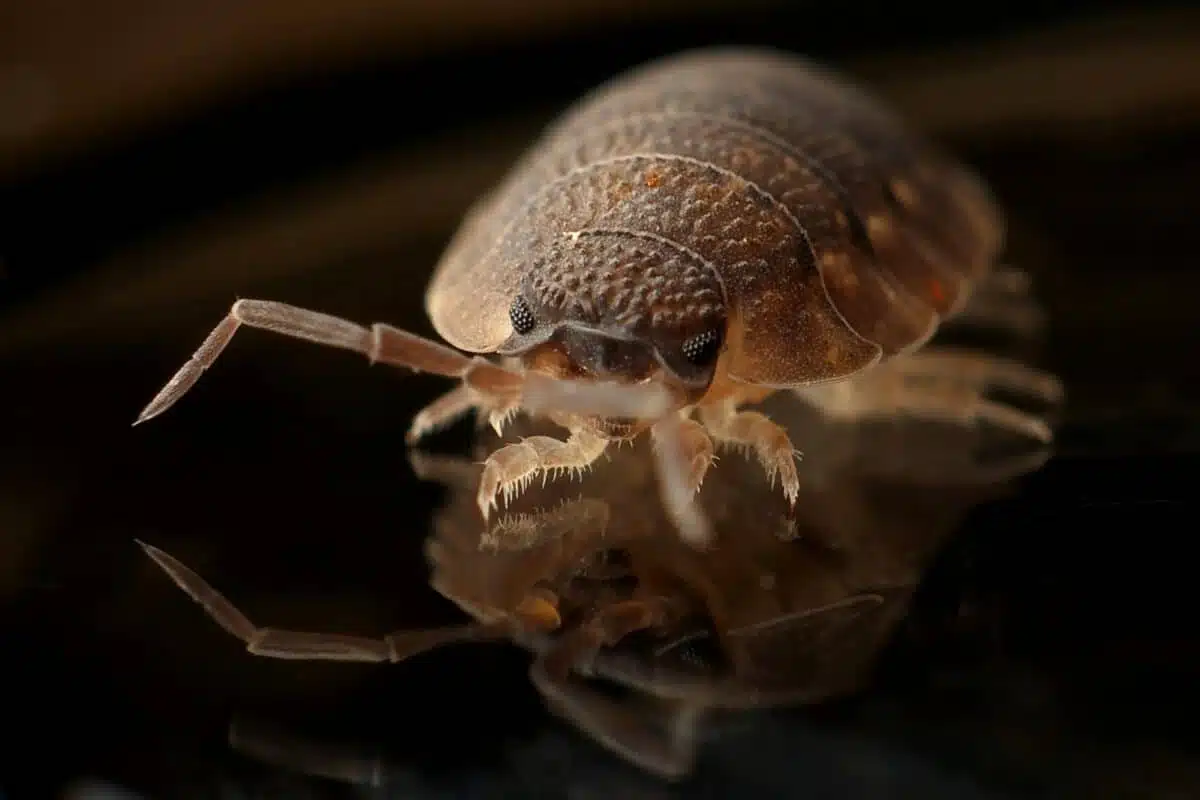Awakening with itchy, red bites? You must be part of the growing population that is struggling to keep bed bug infestations at bay.
It’s important to understand early warning signs for these pesky critters so you can take preventive measures before an unwelcome problem becomes more severe.
Don’t let bed bugs take over your home — stay ahead of the game by understanding the early signs of bed bugs, their life cycle, and how to identify early signs.
Knowing prevention methods that can help you nip an infestation in the bud before any serious damage is done will keep your sanity and finances intact!
Life Cycle Of A Bed Bug
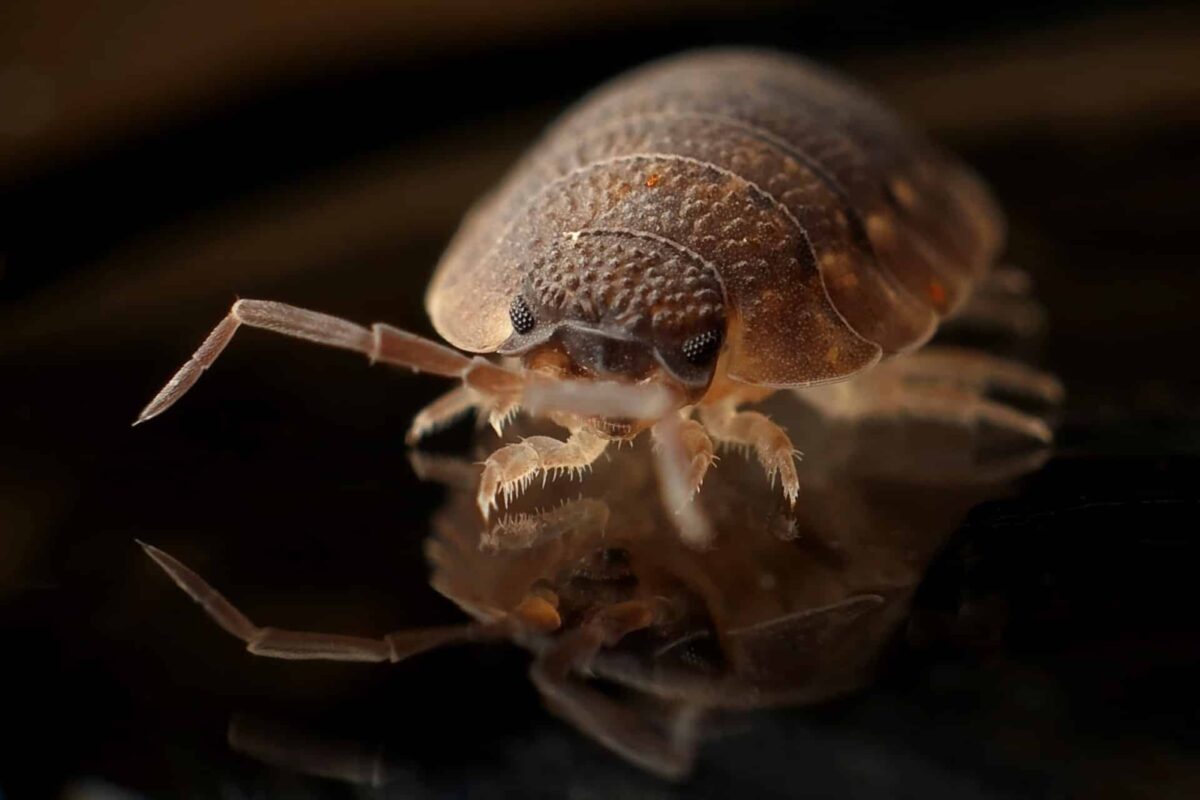
If you are not careful, bed bugs could become a huge problem for you.
Here’s what you need to know about the life cycle of a bed bug so that you can identify and get rid of them before they cause any serious damage.
Egg Hatches Into a Nymph
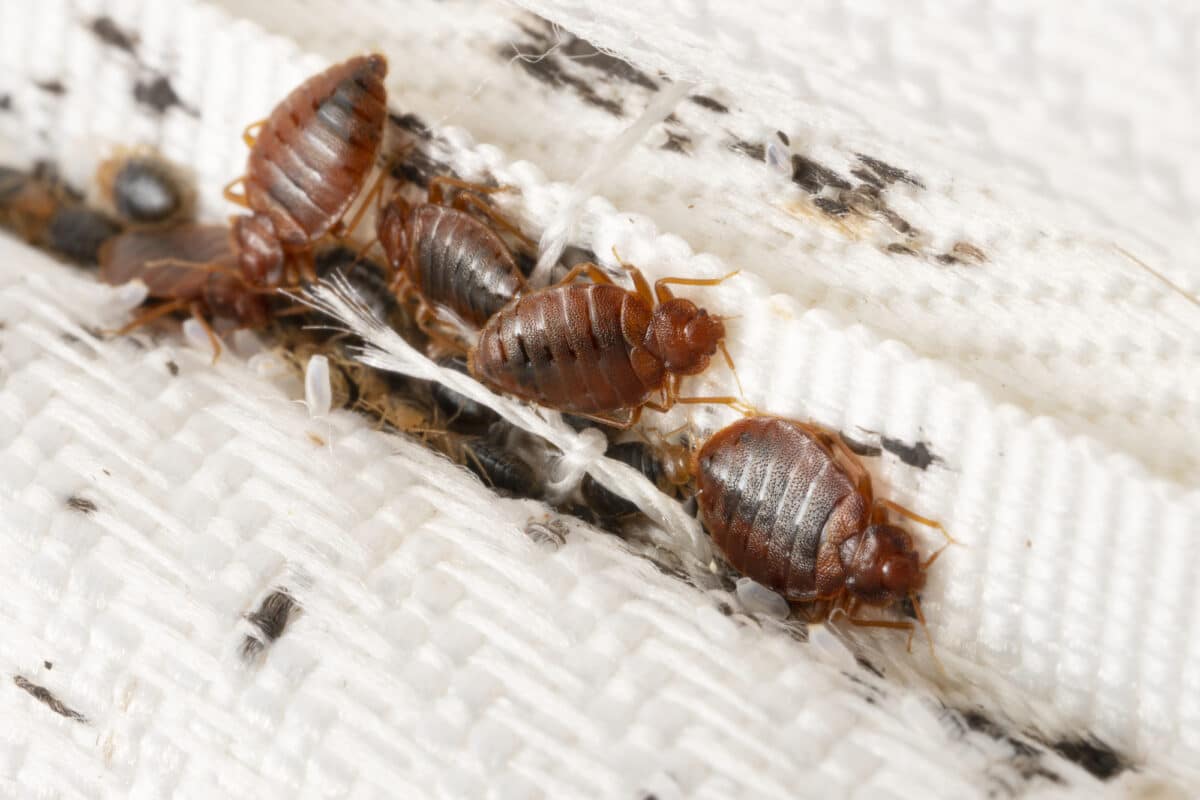
A bed bug’s life cycle starts when an egg hatches into a nymph, the first of its developmental stages. The nymphs are tiny but fully formed and ready for their adult lives—which could survive for months without eating as long as living conditions are favorable.
Nymphs – Small, Wingless Insects
Nymphs are small, wingless insects – distinguishing them from typical flying insects. To survive, they must find sustenance in animal or human blood. It puts them in an interesting category of insects, away from their relatives – and closer to the more unforgiving territory.
The bites these wingless threats can cause often become itchy and red, with pain sometimes persisting for upwards of a week. While rarely fatal, avoiding encountering a nymph remains the best course for travelers.
Mating After Feeding
Mating is an important part of establishing a successful bed bug population. After they feed, mating takes place almost immediately. The female bed bug can lay up to five eggs per day. This so-called “capacity” is why their species flourish in all temperatures and can cause a short burst of populations.
With the ability to lay upwards of five eggs a day, coupled with the capability of thriving in most conditions, it is easy for their entire population to look vibrant and young within no time.
Resilient Creatures
Adult bed bugs are quite resilient creatures. This creature can live without food for up to 10 months! Once they emerge from the final molt, they rapidly seek romantic encounters. Having survived the challenging pre-adult life stages, they desperately want to leave their mark on the species with more offspring. After all, reproducing is a primary purpose in any creature’s life, and this bug is no exception.
Reproduction – Bed Bugs Lay Up To 500 Eggs
Bed bugs can lay an extraordinary number of eggs throughout their lives. In fact, up to 500 eggs! Understandably, many new bed bug generations come from that clutch.
Molting
For each egg to grow into a mature adult bed bug, it must undergo five rounds of molting in a process called instars – each molt results in discarding its outer shell. The molting process is one step closer to becoming an adult bed bug.
Therefore, more than five stages typically exist before adulthood is achieved, depending on environmental factors and access to blood meals.
How Long Do Bed Bugs Live
Bed bugs can cause various problems in a household. These little critters live on blood but don’t carry any diseases.
One of the main questions people have is how long these insects live.
Fortunately, bedbugs only have life spans ranging from four months to one year, with individuals living anywhere from two months up to 18 months.
Their lifestyle and feeding patterns are interconnected to their lifespan – they usually feed every 5-10 days and stay near their food source when possible. They will survive longer if they have a continual supply of blood.
Death occurs after the insect runs out of food sources or when natural predators come into contact with them. Bed bugs also die due to extreme temperatures and lack of environmental moisture.
Behavior And Habits Of Bed Bugs
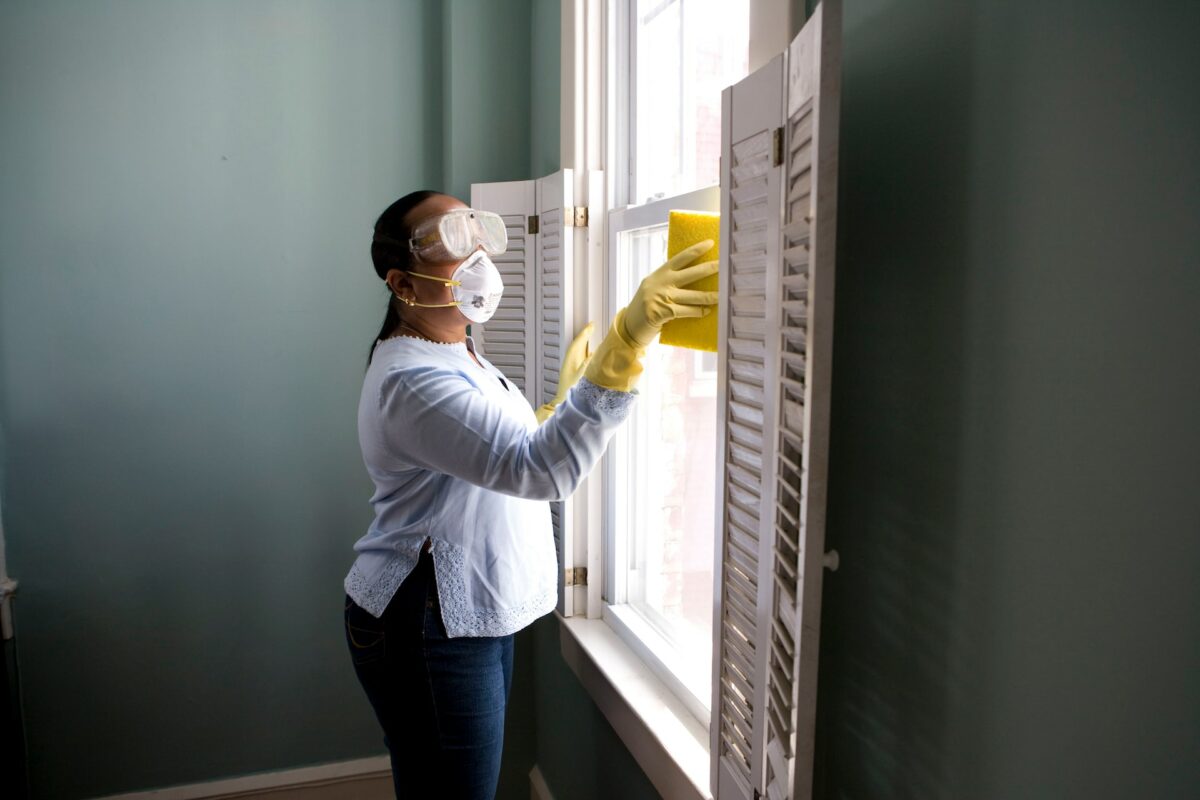
Bed bugs are unwelcome guests in any home or business. Their behavior will depend on the environmental conditions of their surroundings; they are sensitive to temperature and humidity, so they will usually search out warm, humid places to hide.
They often live in mattress seams, box springs, furniture crevices and carpets near beds, behind pictures and electrical outlets – anywhere there is an aperture or opening that offers protection. As nocturnal creatures, bed bugs come out once the lights have gone out, making it difficult to detect them during the day.
Seeing bed bugs during the day usually indicates a large infestation. The recent surge in bed bug infestations across the globe shows how resilient these pests can be when adapting to changes in the environment, climate and human behavior. Clearly, knowledge and caution about these unwanted visitors are necessary for households everywhere.
How Do Bed Bugs Come Into Your Life?
Bed bugs can come into your life through a variety of methods. Suppose one’s primary residence is infested with bed bugs. If so, they can easily spread to second residences such as vacation homes, college dorms, assisted living facilities, hotels, and other accommodations.
They hide during the day and feed on blood at night; they come out when their hosts are sleeping or inactive. They can also travel from place to place on clothing, luggage, furniture, or bedding – meaning that if you encounter them in a hotel room or someone’s home, they might tag along with you.
Taking preventative measures such as thorough checks of any used furniture or second-hand items before bringing them home is the best course for reducing the chances of finding yourself with an infestation.
How Long Does It Take to Show Signs of Bed Bugs?
Many people are wondering how long it takes before the signs of bed bugs appear. Unfortunately for those dealing with an infestation, these pesky pests can remain undetected for some time before any indication of their presence is noted.
While it varies greatly depending on the infestation’s severity, signs typically arise in a few days to several weeks after the initial exposure of bed bugs into the environment. It is important to be proactive in identifying and treating potential home issues to reduce the damage.
Knowing what to watch out for and conducting regular inspections can help you avoid potential problems.
How To Catch Bed Bugs?
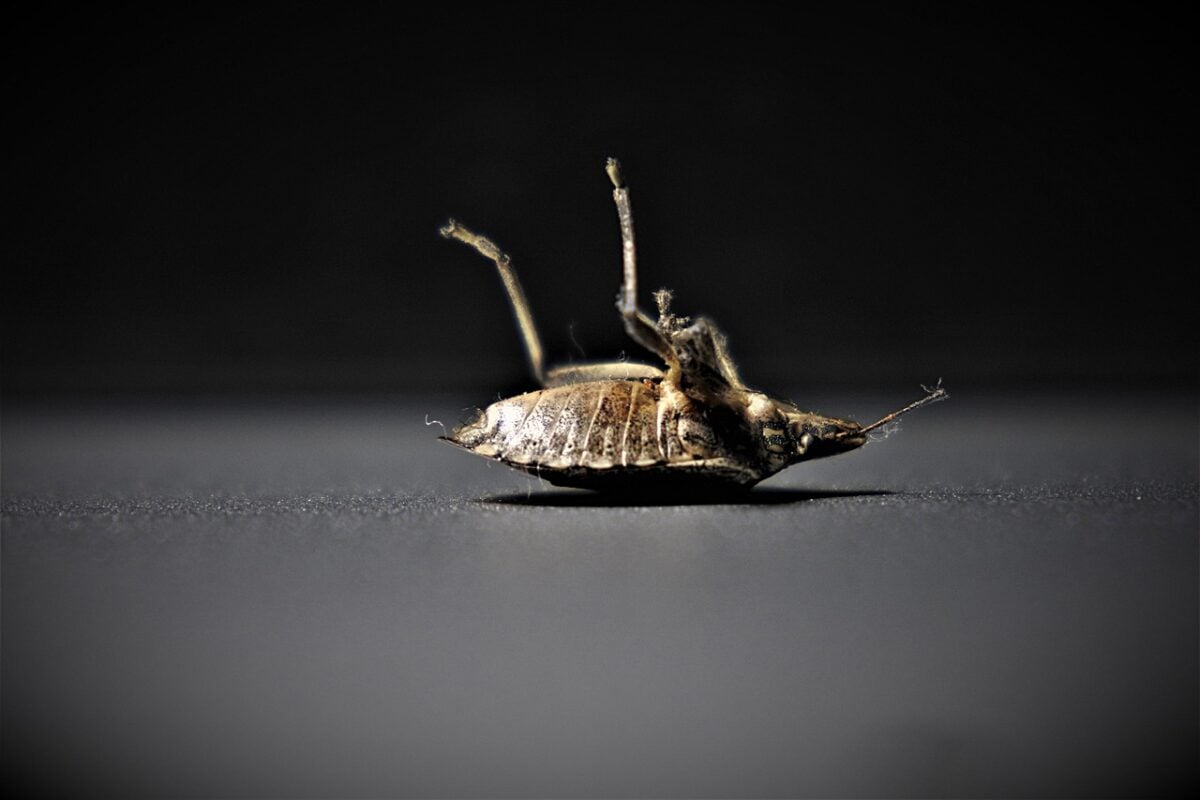
Proactive prevention is key to avoiding a bed bug infestation in your home. Regularly inspect for signs and control clutter – the fewer hidden spots, the better! By being vigilant, you can easily identify problems before they become uncontrollable.
Early Signs Of Bed Bugs
Performing a visual inspection for bed bugs is simple but requires attention to detail and caution. Following are the early signs of bed bugs:
#1 Tiny, Reddish-Brown Bugs
The first sign of this pesky creature is usually tiny, reddish-brown bugs. These bugs are about the size of an apple seed, and you can be found in the cracks and crevices of beds, sofas, and other furniture. They can also be found in the seams of mattresses and box springs.
#2 Blood Stains On Sheets
Another sign of bed bugs is blood stains on sheets or other fabric. Bed bugs feed on human blood, leaving small amounts of blood when they bite. This blood can stain sheets and other fabric.
#3 Dark Spots On Mattresses
Bed bugs can also leave behind dark spots on mattresses or other furniture. These spots are bed bug feces, which are small, dark-colored pellets.
#4 Eggshells And Shed Skin
Another sign is the presence of eggshells and shed skin. Bed bugs lay their eggs in small clusters, and these eggshells can often be found near where the bed bugs are hiding. Bedbugs also shed their skin as they grow, which can also be found near where the bedbugs are hiding.
#5 Musty Odor
Bedbugs often emit a musty odor that has been described as similar to the smell of coriander. This odor is caused by the bedbugs’ scent glands, which they use to mark their territory.
#5 Bites On The Skin
One of the most common signs of bedbugs is bites on the skin. Bedbugs bite humans on the face, neck, arms, or legs. These bites can cause redness, swelling, and itching. Learn in detail about the Bed bug bites here.
If you encounter any signs during your visual inspection, contact professional help immediately for further assistance on how to address the situation correctly and effectively.
When Should You Be Concerned About Bed Bugs?
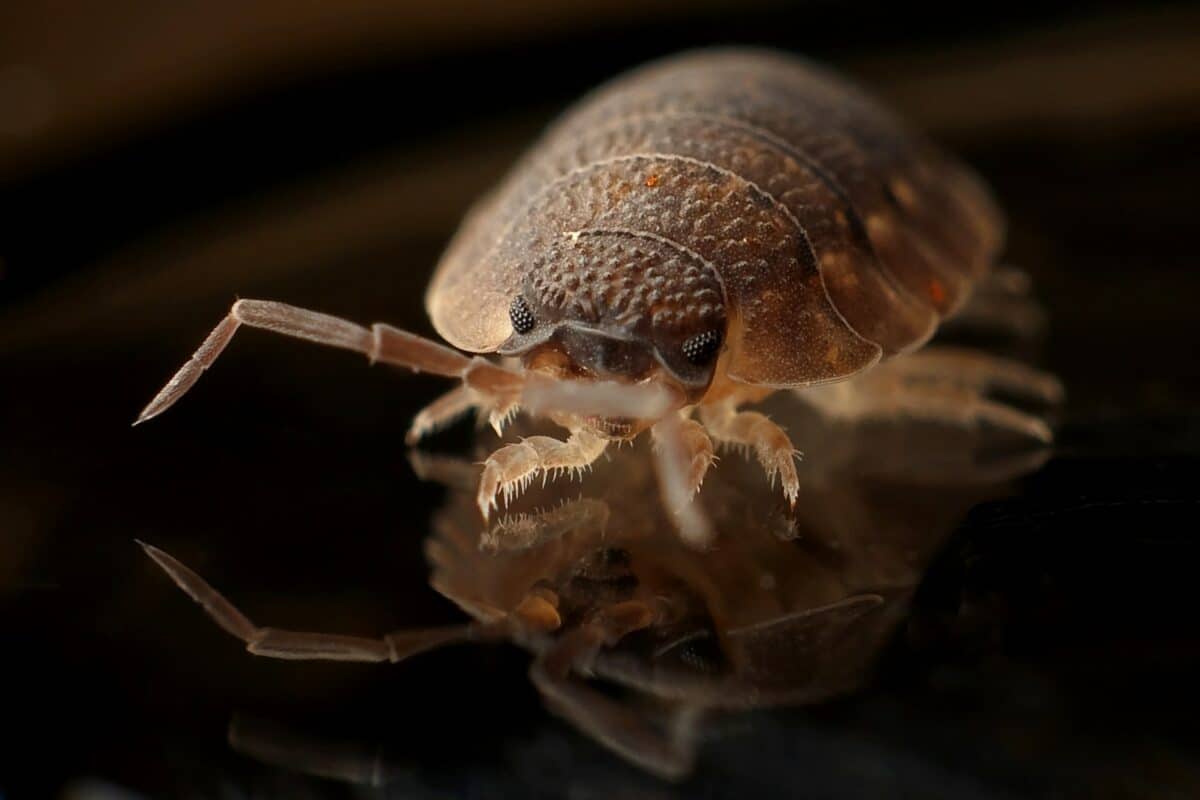
Bed bugs are a real worry for people living in urban areas, and it’s necessary to know when you should begin to be concerned about them. If you find either of the above-mentioned signs, start taking preventive measures as soon as possible.
Suppose you are suspicious of bedbug activity in any way. In that case, it is best to immediately check it out with a certified professional to avoid further infestation problems that could become more difficult – and costly – over time.
How To Prevent Bed Bugs

Are you tired of waking up with bites on your arms and legs? You have tried using bed bug spray, but it never works?
Imagine getting rid of bed bugs in just one week and no longer worrying about being bitten every night while you sleep.
Follow the preventive measures in the affected areas with signs of infestation.
#1 Check For Bed Bugs Regularly
One of the best ways to prevent bed bugs is to check for them regularly. You can do this by inspecting your bedding and furniture for signs of bed bugs. Look for small, brownish-red stains on sheets and mattresses and small, dark-colored bugs.
#2 Keep Your Home Clean And Clutter-Free
Another way to eliminate bed bugs is to keep your home clean and clutter-free. Bed bugs are attracted to dirt and clutter, so by keeping your home clean and tidy, you can help to prevent them from infesting it.
#3 Vacuum Regularly
Vacuuming is another effective way to prevent bed bugs. Vacuuming can help to remove any bed bugs that may be present in your home, as well as any eggs or larvae that may be present. Be sure to vacuum all areas of your home, including under furniture and in crevices and cracks.
#4 Steam Clean Your Carpets And Upholstered Furniture
Steam cleaning your carpets and upholstered furniture can also help to prevent bed bugs. The high steam temperatures will kill any bed bugs or eggs that may be present in these items.
#5 Wash All Of Your Clothing And Linens In Hot Water
Washing your clothing and linens in hot water is another effective way to prevent bedbugs. The high temperatures will kill any bedbugs or eggs that may be present in these items.
#6 Examination After Traveling
Traveling often brings new and exciting experiences but can also bring unwelcome stowaways like bed bugs. To avoid bringing bedbugs home after traveling, there are some important steps you should take.
Upon arriving back home, check your room, vacuum your suitcase and inspect all clothing items before putting them away to catch any pests that may have returned with you.
Do Bed Bugs Infest the Whole House?

Bed bugs pose a huge and terrifying problem to homeowners. Once they have infested the home, it can be hard to get rid of them without professional help. Contrary to popular belief, the most common form of bed bug infestation is localized, which means that if you are having an issue with bed bugs, your entire home will not likely be infested.
They typically hide in cracks and crevices inside rooms where they can feed on humans or animals while they sleep. Unfortunately, even if bed bugs are only present in one room of your house, they can still spread rapidly if left untreated.
To prevent a full-house infestation and to rid your home of any existing infestation, it is important to contact a pest control professional for assessment and treatment immediately.
If Need Be, Take Professional Help
Nobody wants bed bugs in their home. Unfortunately, these nasty pests can cause a great disruption to both your sleep and your peace of mind. Luckily, there are different tips to get rid of them.
Professional exterminators provide an effective solution whereby they use targeted treatments to eliminate bed bug infestations.
They will conduct a thorough inspection to confirm the presence of bed bugs and then proceed with treatments that include insecticide sprays and dust and thermal heating methods. It will eliminate the adult pests and the eggs before they further incubate.
By choosing professional help to get rid of bed bugs, you can save time and hassle. These experts have the necessary training, experience, and tools to eradicate bed bugs successfully in line with industry standards and regulations.
Post-Treatment Monitoring Of Bed Bug
After treating the infestation of bed bugs, post-treatment monitoring is still necessary to ensure the successful elimination of these pests. Monitoring should occur at least once a month for at least three months following the initial intervention.
During this time, an experienced professional should perform detailed inspections of any areas that previously had bedbugs found within them. Keep track of any new sightings or bites indicating a potential resurgence of bedbugs.
To accurately identify whether any bedbugs are present, it can be beneficial to use traps that indicate if any are lurking in hard-to-reach spots.
Additionally, regularly inspect for evidence or cast skins on furniture and other upholstery. If proper post-treatment monitoring is conducted and immediate need-based treatments are implemented when necessary, further infestations can be prevented.
The Final Verdict on Bed Bugs

| Key Points |
| A bed bug’s life cycle starts when an egg hatches into a nymph, the first of its developmental stages. |
| These little critters live on human and animal blood but don’t carry any diseases. |
| The first sign of this pesky creature is usually tiny, reddish-brown bugs. |
| One of the best ways to prevent bed bugs is to check for them regularly. |
| To prevent a full-house infestation and to rid your home of any existing infestation, it is important to contact a pest control professional for assessment and treatment immediately. |
If you have bites in a line or cluster, this is usually indicative of bed bugs. If the bites itch and turn red, it’s also likely that you’re dealing with bed bugs.
Pay attention to your environment, and inspect for other early signs of bedbugs, such as tiny brownish-red eggs on surfaces or small dark stains on sheets or mattresses. If you have found evidence of bedbugs, call a professional exterminator immediately to get rid of them before they multiply.
Thank you for reading this article! Our world is teeming with other tiny creatures that we often overlook – for example, do you know What Crickets Eat? Or check out the other Insect Articles.
- Magpie Bird Is Reunited with Her Dog Best Friend - April 24, 2024
- Dog Saves Another Dog From Drowning in Fish Pond - April 23, 2024
- Man On Motorbike Rescues Cat From Highway - April 23, 2024

